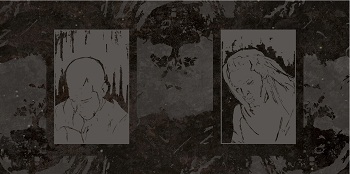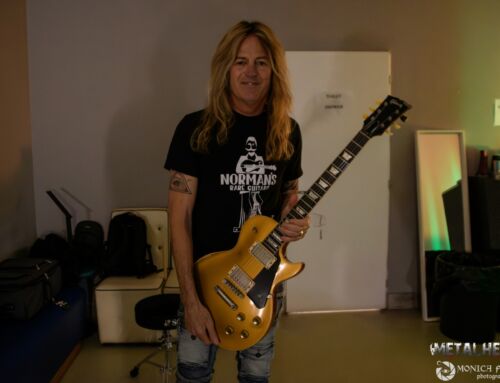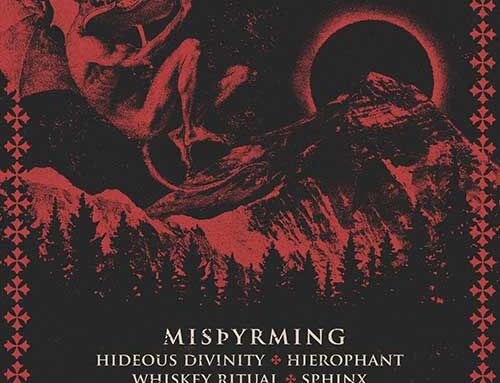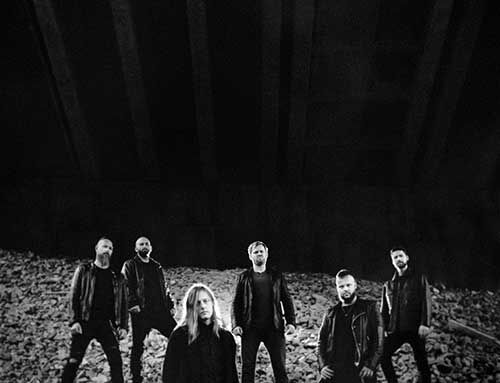 They come from Canada. Grey, this is the meaning of the moniker. And grey is the feeling that comes out from their impressive and outstanding music. But grey is a feeling, an atmosphere. Gris rather paint a canvas with the endless range of colors you find in autumn, with all the shades of them all. The paint is created with music, with sounds, with a very smart combination of instruments, voices, atmospheres and emotions. Because emotions is what Gris creates in the end, emotions is what you get out of their music. Their last album is amazing… so we took the chance to ask Neptune, one of the two true artists behind this project, few questions to reach a deeper level of those emotions…(versione italiana)
They come from Canada. Grey, this is the meaning of the moniker. And grey is the feeling that comes out from their impressive and outstanding music. But grey is a feeling, an atmosphere. Gris rather paint a canvas with the endless range of colors you find in autumn, with all the shades of them all. The paint is created with music, with sounds, with a very smart combination of instruments, voices, atmospheres and emotions. Because emotions is what Gris creates in the end, emotions is what you get out of their music. Their last album is amazing… so we took the chance to ask Neptune, one of the two true artists behind this project, few questions to reach a deeper level of those emotions…(versione italiana)
Hello! Thanks for the interview. “À l’Âme Enflammée, l’Äme Constellée” is something so great and superb. I loved it. I gave it one of the highest rating ever on my review. I have some questions now for you…
Thank you very much.
I think I am a good music connoisseur. I can spot details and understand music quickly. That’s what I do and the reason why I write about music. But your last album killed me. I played it for two weeks entirely, without listening to anything else. I couldn’t get deep into it enough to get inspiration to write about it. When I finally understood it, it blew my mind. So, said this, aren’t you afraid public will not understand it and label it as either too long, too boring, too complex or whatever else like that?
You are right, “À l’Âme Enflammée, l’Äme Constellée…” is a fairly complex work of music, not really in a technical way, but more from an emotional point of view – it takes time and focus to really get involved in it, to dive in. It is an album that requires the listener to consider it both as a whole and as a dense web of details and varying colors. In our opinion, this is where its richness lies, but also its complexity. It is not a record that is easy to approach, and we are aware that some listeners may need some time to really get into it and that some will miss the “immediacy” of emotions and messages. “À l’Âme Enflammée, l’Äme Constellée…” was built like a cathedral with alternating windows, halos, arches and mysteries, but is still profoundly grounded in the silence of our hearts.
Tell me about the symmetry. What is CD 1 and what is CD 2. And about this beautiful title that should translate into “A Burning Soul, Soul studded”
The symmetry came in late in the creative process of “À l’Âme Enflammée, l’Äme Constellée…”. As we’ve said in previous interviews, the entire album was written and composed as a whole, not as two discs. Toward the end of the process, we realized that the album had become symmetrical by itself in many ways, and we tweaked certain aspects to make it perfectly so. In our opinion, the correct translation of the title would actually be “To the Burning Soul, the Starlit Soul.” It was a way for us to express different perspectives of the human soul: when you’re close up it appears if it were on fire, but when you move away, it appears to be filled with stars.
Such a complex album must hide a very long and detailed work. Can you tell me something about the creation process?
The creative process was indeed very long and required a lot of effort on our part, especially from an emotional standpoint. Many aspects, such as writing the music, the lyrics and the “final touches” of the album were very personal, requiring a lot of intense discipline so that we could express the complexity of the emotions we wished to convey.
Two men behind this project. What role belongs to each one? I also see you handle the band personally (hence your shop closed until you return). How does the music benefit from this first person and really detailed band management?
Seeing as though the basic concept behind Gris is all about balance, we really want our creative process to be shared equally between the two group members. All of the ideas and concepts, as well as the structure of the tracks, must be based around an even contribution from both of us. Of course, when it comes to specific instruments, we both have our areas of expertise: violins and voices are Icare’s to perfect, while Neptune works with bass and guitar. Icare is drawn toward visuals and symbolism, so he works on the group’s image, and Neptune is more naturally technically-oriented, so he is responsible for all of the technical aspects and the recording process. Regarding the band’s management, we really enjoy having as much of a say as possible in the way our band is presented to the world. However, our sales and distribution are managed by Sepulchral Productions.
Touring: I see you’re around with Annatar and his Sombres Forêts project. Both of your bands do not include enough members to do a gig. Are you helping each other or sharing session members?
Given that Sombres Forêts is a one-man-band, there is a need for us to collaborate in order to do shows, from a logistical standpoint. However, we also share a lot of similarities in our musical styles and preferences, and we have known each other for a long time; it feels natural for us to work together both in studio and on stage.
The production is amazing. I can feel every sound of the guitar, also the mechanical ones, and it give more feeling to the sound. What have you had in mind when you recorded?
Thank you! We definitely opted for a more “organic” and “human” approach to the album’s sound. Even though our aim was perfection, we wanted to avoid using any synthetic sounds – it was important that the listener truly feel that the album was created and produced by humans. However, we also wanted to achieve depth by using multiple layers of sound and instruments to create texture that was almost “surreal” or “superhuman.”
I noticed the bass lines are amazing, so warm, so enchanting. Being a former bass player myself I’d like to know how important is this instrument in your music.
The bass is definitely an important instrument, and we try to make it stand out in our music, contrary to many black metal bands. We want the bass in our music to establish a link between the melodies and the percussions, but beyond that, we also want it to “stand alone” and have its own unique presence.
And what about the other strings like cello and violin? What kind of emotion do you direct in each instrument and how do you choose what part must be played by one or the other instrument?
For “À l’Âme Enflammée, l’Äme Constellée…” specifically, we decided that the violins would be used to represent “burning” or “passion” in the first disc, and that background voices would be used on the second to reflect the mystery and darkness of the night and the stars. While violins are dominant on the first album, and background voices are more present on the second, we also included some violins on the second disk and some background voices on the first. We did this purposely to establish a sense of cohesion between the two disks. Overall, these decisions are really made intuitively and are not so much the result of a systematic decision process.
A question I asked to Annatar as well: Canada vs Norway. French vs Norwegian. You represent the other side of the black metal movement. How do you compare these two important main threads of black metal, and how does your country, another usually dark and cold one, reflects into your music, sound and composition?
Generally speaking, we aren’t trying to position ourselves within the black metal genre – our main objective is to create something that is meaningful to us. In Quebec, there are significant changes in temperature and weather conditions from season to season. This may have an impact on the musical contrasts that we aim to convey through our work.
Touring, ok, but will we ever see you in Italy?
Maybe one day. We would like to play in Italy.
Thanks for your time.
Thank you!
(Luca Zakk)



